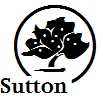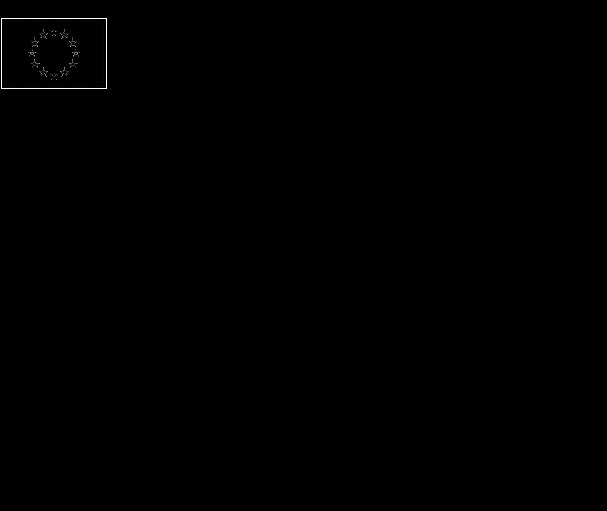chemistry of carbohydrates name_____________ prd.___date_______ part a: carbohydrates biologists today depend upon chemists for
Chemistry of Carbohydrates Name_____________
Prd.___Date_______
Part A: Carbohydrates
Biologists today depend upon chemists for much of their understanding
of life and life processes. Therefore, an understanding of some
chemical concepts important to living things is necessary. Organic
compounds are those which contain the element ____________. Most are
made by living things, but some can be made in a laboratory.
Why is carbon such an important element in living things? Carbon atoms
have ____ valence electrons so they can form covalent bonds with as
many as _____other atoms. Carbon atoms can bond with each other to
form ______________or _____________. The carbon atoms in these chains
and rings can also connect with atoms of other elements to form the
basic units of most biomolecules. Most biomolecules are polymers
(“poly”=many; “mer”=unit) of smaller, repeating units called
__________________(“mono”=single or 1; “mer”=unit). There are 4 main
kinds of biomolecules: Carbohydrates, Lipids, Proteins, and
_____________ ____________.
Carbohydrates are molecules that may also be called ________________.
They are composed of only 3 elements: _______, _______, and
__________. The individual monomer units that make up all
carbohydrates are called _______________________________(“mono”=single
or 1; “saccharis”= sugar).
Carbohydrates are important molecules for providing _______________for
living organisms. In addition, they play important structural roles
for certain organisms. For example, ____________________is a complex
carbohydrate (polysaccharide) that helps build the cell walls of plant
cells.
Part B: Monosaccharides or Single Sugars
The many different types of carbohydrates (or sugars) are grouped into
3 categories: monosaccharides, disaccharides (“di”=2) or
polysaccharides.
Examine the structural formulas and the corresponding models for the
three monosaccharides. The models do not show the exact 3-dimensional
shape of the molecules but illustrate how they differ from each other
as well as how they join together.
1.
What 3 elements are present in monosaccharides?
___________________
2.
How many atoms of carbon are there in each of the monosaccharides?
a.
Glucose __________
b.
Galactose_________
c.
Fructose__________
3.
Write the molecular formulas for glucose, fructose and galactose
by adding the proper subscripts to each of the following:
a.
Glucose C____H____O_____
b.
Galactose C____H____O_____
c.
Fructose C____H____O_____
4.
Compare the number of hydrogen atoms to the number of oxygen atoms
in each sugar. What is the ratio of hydrogen to oxygen? (that is,
how many hydrogen atoms are there for each oxygen atom).
_____________________
5.
How do the ratios of hydrogen to oxygen compare in glucose,
galactose, and fructose?___________________
6.
How do they compare to the ratio in water? _______________
7.
Molecules may have the same molecular formula with identical
numbers of atoms, yet differ in their 3-dimensional shape. This is
called ______________________. Describe an example of isomerism in
monosaccharides:
________________________________________________________________________
Part C: Disaccharides or Double Sugars
Two monosaccharide sugar molecules can join together chemically to
form a larger carbohydrate molecule called a
__________________________, or double sugar.
By chemically joining a glucose molecule to another glucose molecule,
a double sugar called maltose is formed. By joining a glucose molecule
with a fructose molecule, a double sugar called sucrose is formed. By
joining a glucose molecule with a galactose molecule, a double sugar
called lactose is formed.
Glucose + Glucose ___________________(disaccharide)
Glucose + __________________ Sucrose (disaccharide)
Glucose + Galactose __________________(disaccharide)
1.
Attempt to join 2 paper models of glucose to form maltose. What
must be removed from each model in order to join them?
______________________________. Models should fit together but
will not join unless an OH end and an H end are removed.
2.
What common molecule does an H atom combined with an OH group
form? __________________
3.
This type of chemical reaction is called a
_________________________ ________________ reaction. (It may also
be called a condensation reaction). (“dehydrate”=to lose water;
“synthesis”=to build something). Why is this a good name for this
type of reaction?
________________________________________________________________________
With your models, construct the following disaccharides: Maltose,
Sucrose, and Lactose.
4.
Carbohydrate molecules store energy in the bonds between the C, H,
and O’s. Why is there more stored energy in a Sucrose molecule
than in a Glucose molecule?
________________________________________________________________________
5.
Write the molecular formulas for each of the 3 disaccharides you
built. Fill in the correct subscripts for each: (Remember you lost
a water molecule in order to join them)
Maltose C_____H_____O_____
Sucrose C_____H_____O_____
Lactose C_____H_____O_____
6.
What is the H:O ratio of each of the disaccharides?
_________:__________
7.
Does isomerism exist in disaccharides? (Compare your paper models
of the 3 disaccharides): _________
8.
How many monosaccharide molecules are needed to construct one
disaccharide molecule? _________
Part D: Polysaccharides or Complex Carbohydrates
Just as double sugars were formed from two monosaccharide molecules,
complex sugars or __________________________are formed when many
monosaccharides are joined together. Starch and cellulose are two of
the most common polysaccharides in biology. They consist of long
chains of glucose molecules bonded together.
Construct a starch molecule by joining three glucose molecules. Note:
this will only represent a small part of a starch molecule because
starch actually consists of hundreds of glucose molecules bonded
together.
1. What must be removed from the glucose molecules in order to join
them?
____________________What common molecule does this form? ____________
2. What type of chemical reaction joins these glucose molecules to
each other? _________________________________________
3. Determine the molecular formula of this small segment of starch.
Fill in the proper subscripts:
Starch: C_____H_____O_____
4. What is the H:O ratio in starch? ________:_________
5. How does this compare the ratios in the other carbohydrates we have
studied? __________________
Part E: Final Analysis
1. What 3 elements make up all carbohydrates?
_________________ _______________ _________________
2. What is the ratio between Hydrogen and Oxygen in all carbohydrates?
_________________
3. What is the name of the monomer units that make up all
carbohydrates? ________________________
4. What common molecule is always formed when monosaccharide molecules
are joined? ____________________
5. What kind of chemical reaction builds the larger carbohydrate
polymers? ___________________________________
6. “Mono” means 1, “di” means 2, and “poly” means many. Why are these
terms used to describe the three types of carbohydrates?
__________________________________________________________________________________________________________________________
7. What is the primary function of carbohydrates in living organisms?
_____________________________________________________________
 GERMAINE TILLION RÉSISTANTE ! EXERCICES 1 COMPRÉHENSION GLOBALE
GERMAINE TILLION RÉSISTANTE ! EXERCICES 1 COMPRÉHENSION GLOBALE P 1B RÁCTICA DERIVADOS HALOGENADOS OBTENCIÓN DE CLORURO DE
P 1B RÁCTICA DERIVADOS HALOGENADOS OBTENCIÓN DE CLORURO DE SEVILLA A DE DE SU REFERENCIA NUESTRA REFERENCIA
SEVILLA A DE DE SU REFERENCIA NUESTRA REFERENCIA R UIMAN MÚSICA MELÓDICA DATOS PERSONALES MI NOMBRE ES
R UIMAN MÚSICA MELÓDICA DATOS PERSONALES MI NOMBRE ES LONDON BOROUGH OF SUTTON LOCAL GOVERNMENT ACT 2003 KIMPTON
LONDON BOROUGH OF SUTTON LOCAL GOVERNMENT ACT 2003 KIMPTON FJIWRDET REPORT ON WITNESSING ACTIVITY (DETERMINATION) NAME AND ADDRESS
FJIWRDET REPORT ON WITNESSING ACTIVITY (DETERMINATION) NAME AND ADDRESS 1DÉFINITION DU PROBLÈME LA DIRECTIVE 9425CE RELATIVE AUX
1DÉFINITION DU PROBLÈME LA DIRECTIVE 9425CE RELATIVE AUX SUPPLEMENTAL DATA DESIGNING TRACEABLE OPIOID MATERIAL§ KITS TO IMPROVE
SUPPLEMENTAL DATA DESIGNING TRACEABLE OPIOID MATERIAL§ KITS TO IMPROVE RETORICA E SEMANTICA TROVIAMO IN QUESTO AMBITO I TROPI
RETORICA E SEMANTICA TROVIAMO IN QUESTO AMBITO I TROPI